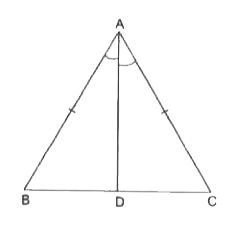Prove that the internal bisectors of the angles of a triangle are concurrent
Step by step video & image solution for Prove that the internal bisectors of the angles of a triangle are concurrent by Maths experts to help you in doubts & scoring excellent marks in Class 12 exams.
Updated on:21/07/2023Topper's Solved these Questions
- QUESTION BANK 2021BOOK - NAVNEET PUBLICATION - MAHARASHTRA BOARDCHAPTER - QUESTION BANK 2021EXERCISE - LINE AND PLANE
40 Videos
- QUESTION BANK 2021BOOK - NAVNEET PUBLICATION - MAHARASHTRA BOARDCHAPTER - QUESTION BANK 2021EXERCISE - LINEAR PROGRAMMING PROBLEMS
30 Videos
- QUESTION BANK 2021BOOK - NAVNEET PUBLICATION - MAHARASHTRA BOARDCHAPTER - QUESTION BANK 2021EXERCISE - PAIRS OF LINES
21 Videos
- PROBABILITY DISTRIBUTIONBOOK - NAVNEET PUBLICATION - MAHARASHTRA BOARDCHAPTER - PROBABILITY DISTRIBUTIONEXERCISE - MULTIPLE CHOICE QUESTIONS
9 Videos
- THREE DIMENSIONAL GEOMETRY BOOK - NAVNEET PUBLICATION - MAHARASHTRA BOARDCHAPTER - THREE DIMENSIONAL GEOMETRY EXERCISE - MULTIPLE CHOICE QUESTIONS
8 Videos
Similar Questions
Knowledge Check
The internal bisectors of the angles B and C of a triangle ABC meet at I. If ∠BIC=∠A2+X then X is equal to
A60∘B30∘C90∘D45∘
Prove using vectors: Medians of a triangle are concurrent.
View SolutionProve that the bisectors of the angles of a linear pair are at right angle.
View SolutionProve that the angle between internal bisector of one base angle and the external bisector of the other base angle of a triangle is equal to one half of the vertical angle.
View SolutionProve that the angle between internal bisector of one base angle and the external bisector of the other base angle of a triangle is equal to one-half of the vertical angle.
View SolutionProve that the bisector of the vertical angle of an isosceles triangle bisects the base at right angles.

View SolutionProve that the quadrilateral formed by the bisectors of the angles of a parallelogram is a rectangle.
View SolutionShow that the perpendicular bisectors of the sides of the triangle with vertices (7,2),(5,−2)and(−1,0) are concurrent. Also find the coordinates of the point of concurrence (circumcentre).
View Solution
